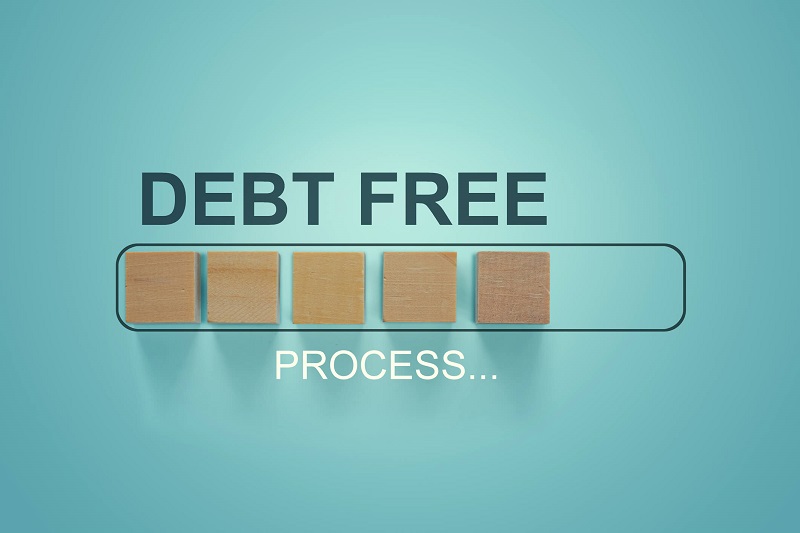Debt: A self Oppression
Suppose you want to live a stress-free financial life and attain big financial goals. The most resisting obstacle could be ‘Debt’ and it could behave as a negative catalyst in your financial progress when increased too much and interest also joins the party. Whether it’s school loans, credit card debts, personal debts, or home loans, the weight of debt can impact your capability to save, invest, and progress financially. However, careful debt management and its efficient repayment strategy can make your ways convenient towards financial freedom. The guide is supposed to make you aware of which level the debt could be harmful to and its repayment strategy, so that you can progress financially well dealing with it and implementing different debt repayment strategies.
Proven Debt Repayment Strategies
- The Debt Snowball Method
The debt snowball method strategy concentrates on paying off the smallest balances first, then proceeding toward the largest.
Steps:
- List all the debts following order smallest to the largest as you have to proceed this way.
- Payback all minimum payments.
- Allocate extra funds toward the smallest debt.
- After the smallest debt is paid off, proceed towards comparatively larger debt, and keep repeating until the largest debt is paid off.
How It Works:
This method results in motivation for yourself, as you can see your debts fully paid down from scratch but one disadvantage of the debt snowball approach is that you might be able to save a greater amount in overall interest by utilizing alternative strategies.
- The Debt Avalanche Method
The debt avalanche strategy focuses on repaying debts with the highest interest rates initially, thereby reducing the total cost of borrowing.
Steps:
- List all the debts following the descending order of the interest rates applied corresponding to each debt.
- Target the highest interest rate debt first, save and spend all needed money on it, and pay the minimum for the rest.
- Allocate additional funds to the debt that carries the highest interest rate.
- After that debt is settled, move on to the next one.
How It Works:
This method feasibly saves a lot of money by reducing the total interest to be paid, you can avoid the interest as much as possible. After you are done with the larger interest debt, your burden is reduced, and power boosts.
- Balance Transfer Strategy
The interest rates for debt payoff vary on different credit cards. If you have multiple credit cards, the clever thing you can do is transfer all the balances to a credit card that charges lower interest or late deadlines.
Steps:
- Research and explore credit cards that offer balance transfer promotions, less interest or flexibility in deadlines, etc.
- Make a transfer and concentrate on paying it back within the promotional period.
- Keep your credit card debt from growing.
How It Works:
It eliminates and diminishes your interest temporarily, hence releasing your burden allowing you to breathe off and pay back gradually.
- Debt Consolidation
Debt consolidation goes for combining multiple loans into a bigger single loan with a lower interest rate so it becomes more counterable to manage payments monthly and the focus is eased.
Steps:
- Apply for a consolidation loan or you can also use a home equity loan if available.
- Use this consolidated loan to get your current debts paid off.
- Make consistent payments on the new loan.
How It Works:
As it combines all the debts into a single one, strategizing becomes simpler and easier than ever. You become focused on a single liability instead of being multi-minded.
- Creating a Budget and Allocating Funds
Track your income and expenses, and create a budget in which you can alot maximum towards debt repayment.
Steps:
- List out all sources of income and necessary monthly expenses.
- Identify areas to cut back extra expenses, and limit to basic needs only, such as avoiding spending on dining out or entertainment, etc.
- Redirect saved funds toward your debt repayment plan.
How It Works:
Budgeting and saving money for debt keeps you well-disciplined and trains you to avoid wasting money prioritizing debt repayment over voluntary expenses.
Final Words
Finally, debt management is an essential component of financial life. Maintaining discipline, focus, and consistency in repayment is crucial employing the best repayment strategy, whether employing the debt snowball, avalanche, balance transfer, or consolidation tactics. Creating a reliable budget in a way one could prioritize debt is the key for debt repayment strategy. The repayment of the debts brings the sigh of relief and elimination of mental stress which become the root cause of financial stability and greatness.

